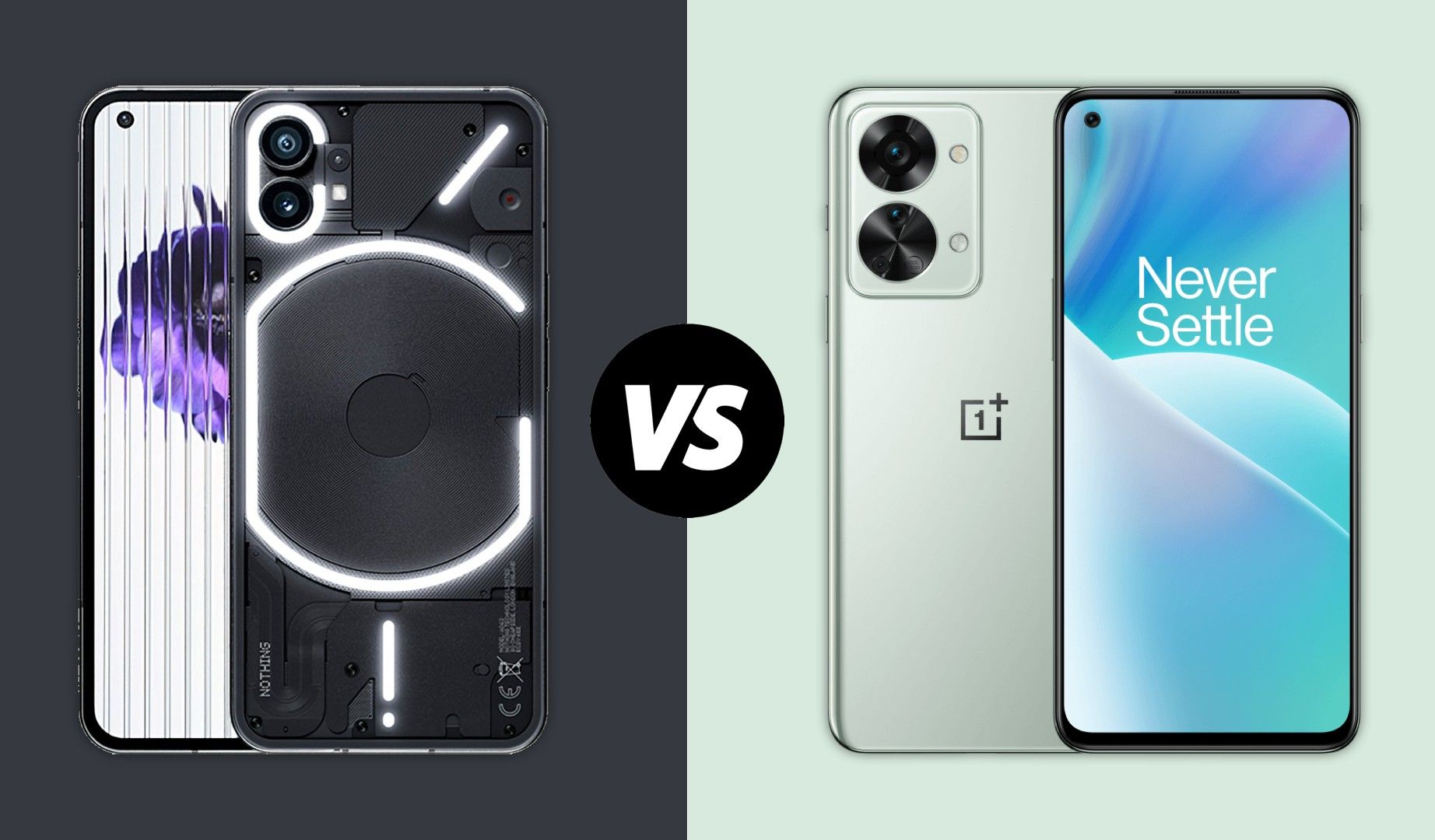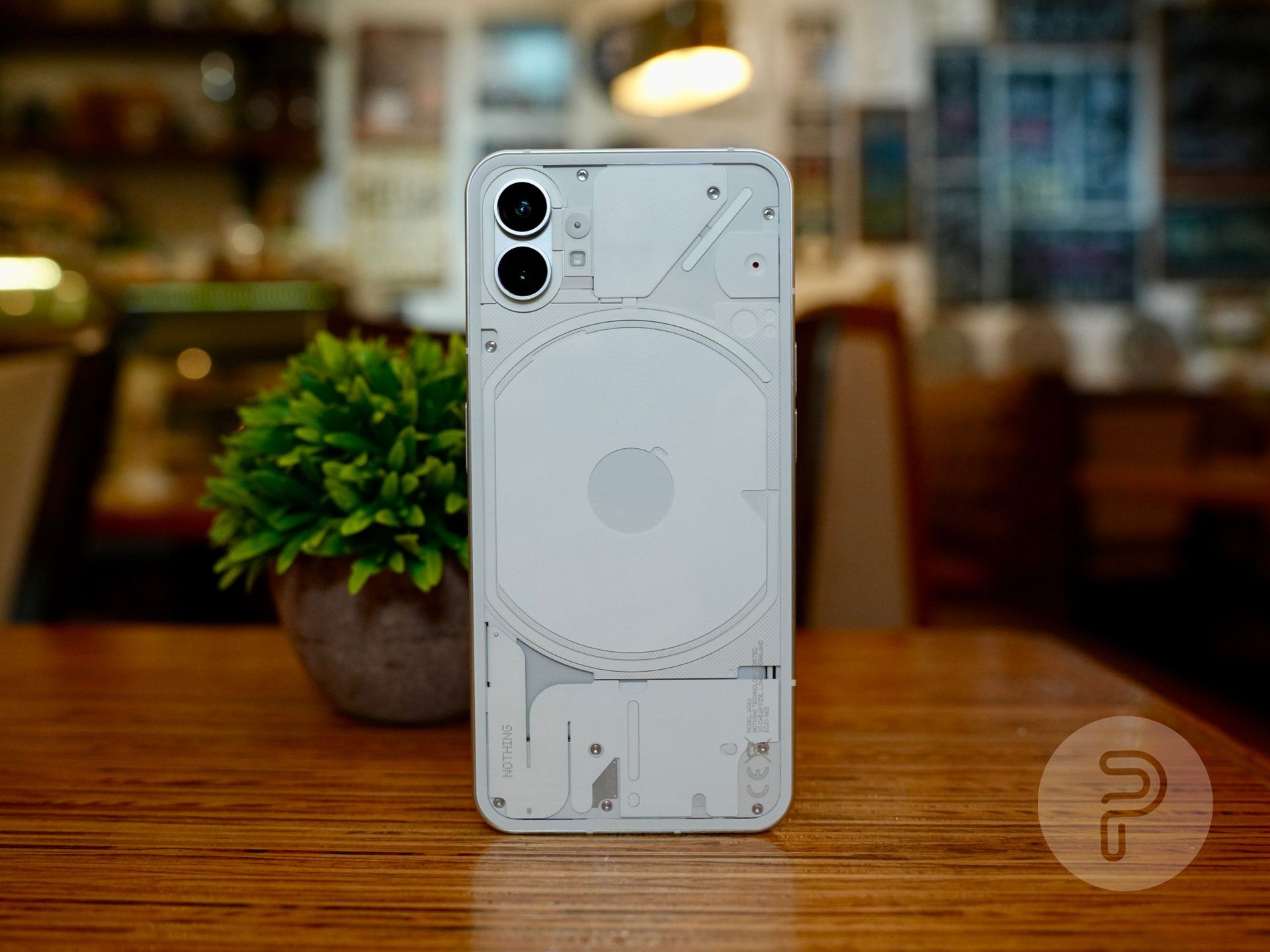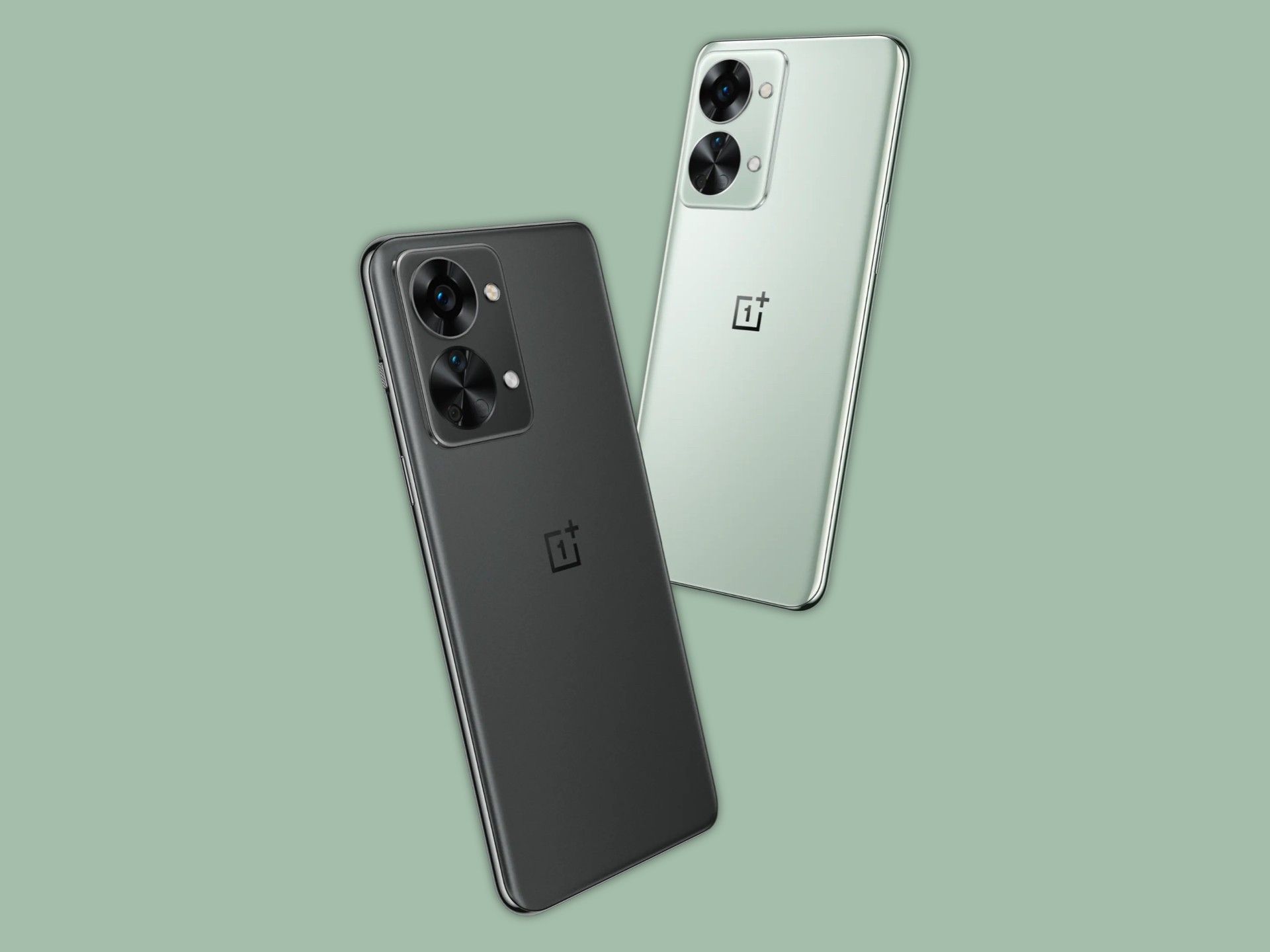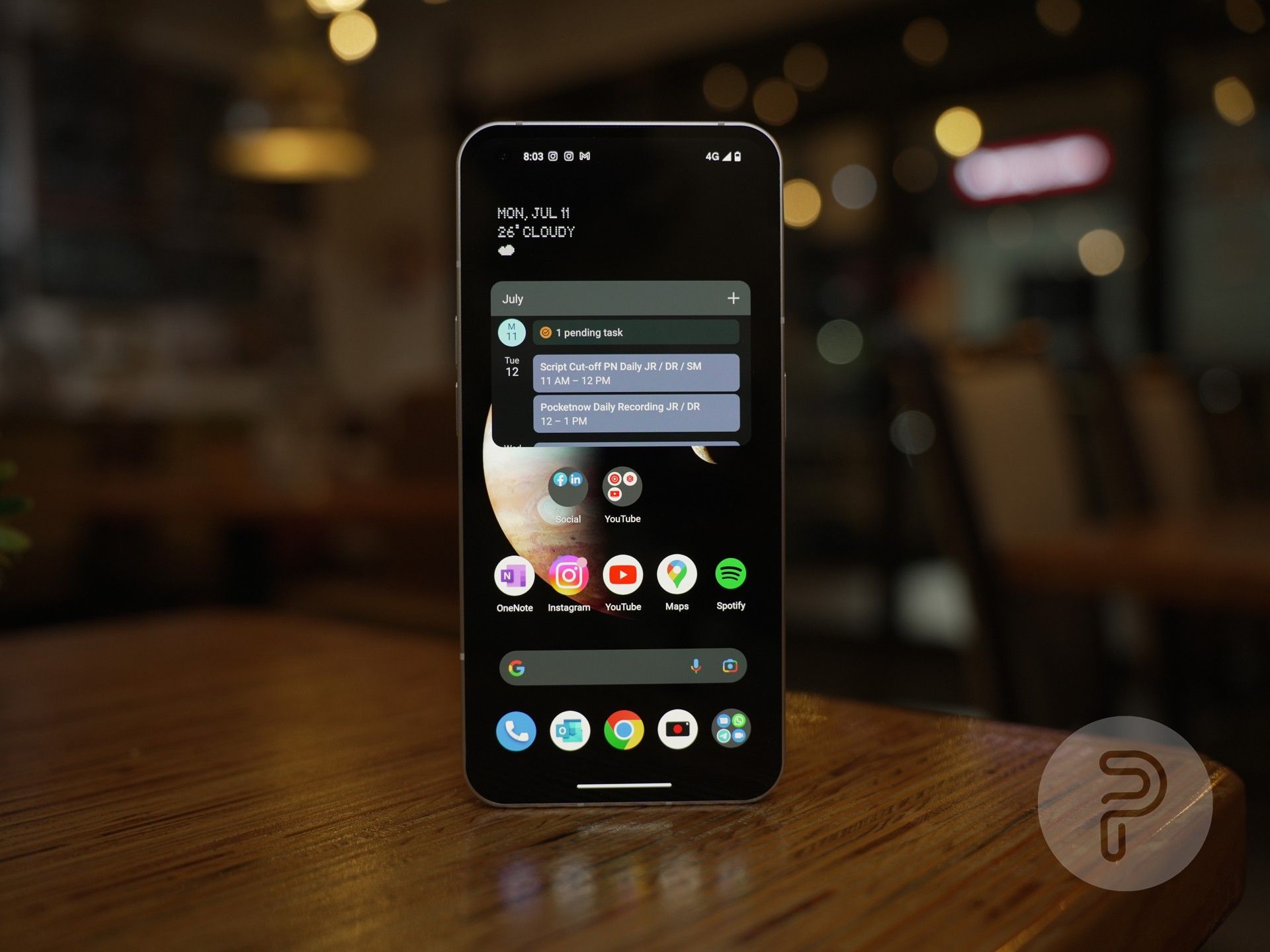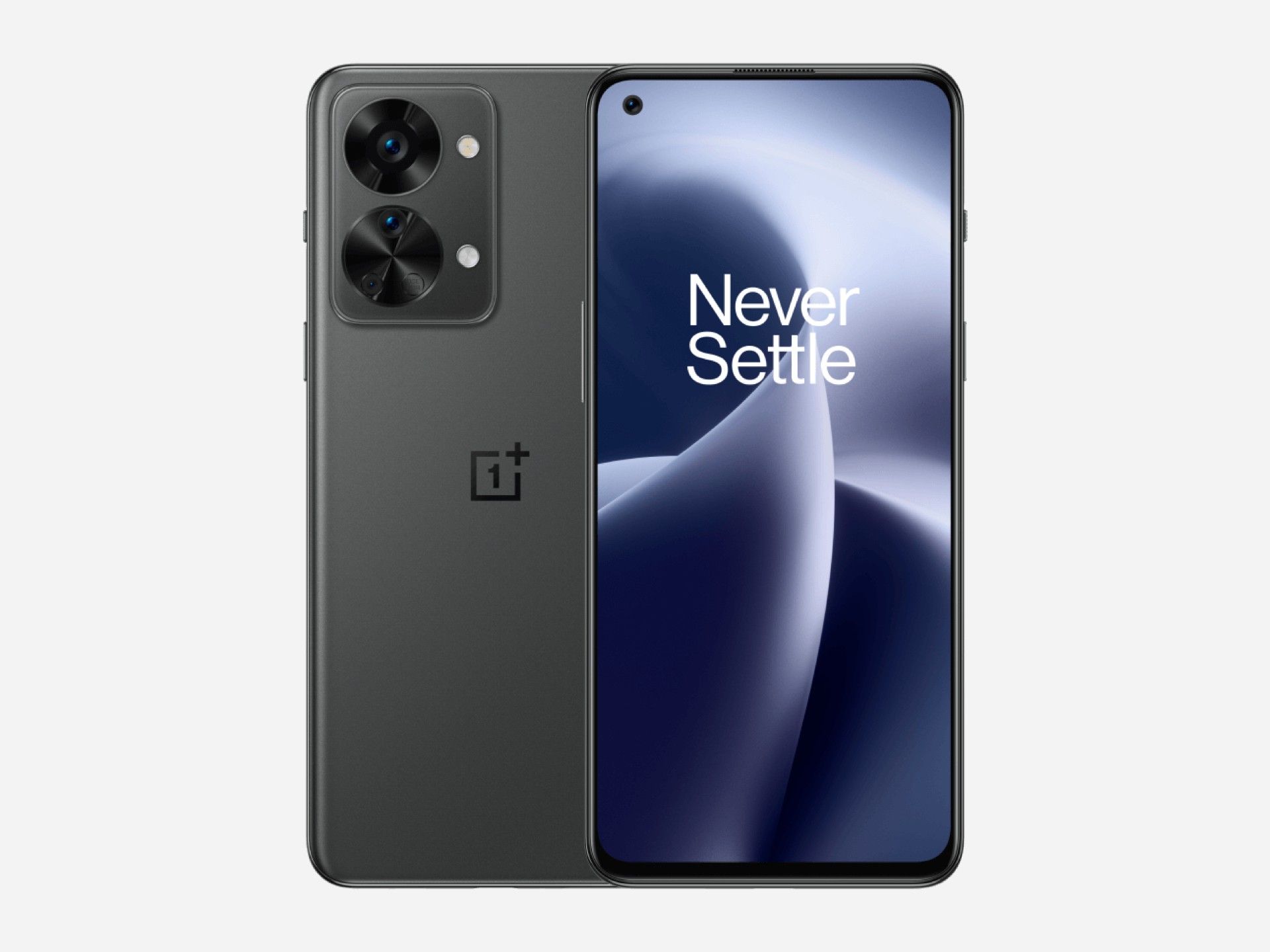Nothing, the new technology venture of ex-OnePlus chief Carl Pei, introduced its first smartphone earlier this month called the Nothing Phone 1. Priced at £399, the Nothing Phone (1) goes against the likes of the Samsung Galaxy A53 and Google Pixel 6a. In this article, we put down the Nothing Phone 1 against another highly popular mid-range smartphone, the OnePlus Nord 2T, to see which smartphone is best for you.
Design
Source: Pocketnow
Starting off with the design of the two smartphones, it's quite evident that the Nothing Phone (1) doesn't look anything like other mid-range Android smartphones. The smartphone sports a transparent back that shows off its industrial elements, such as the screws that hold its panel in place and the wireless charging coil. There's also a set of LED light strips present on the back of the phone, which Nothing calls the "Glyph Interface". You can read more about the functionality and what the Glyph Interface offers right here.
Apart from the futuristic-looking back, Nothing Phone (1) is surrounded by an aluminum metal frame. The Phone 1 also features Gorilla Glass 5 protection on the front and back. The Nothing logo, engraved in the dot matrix font, can be found in the bottom left corner. Overall, it's safe to say that the design of the Nothing Phone 1 is quite unique and eye-catching.
Source: OnePlus
On the other hand, the OnePlus Nord 2T carries the typical OnePlus smartphone look. It has curved edges compared to the flat edges of the Nothing Phone (1). It also carries a larger than average camera island and a more pronounced look to differentiate itself from other competitive devices. The Gray Shadow variant of the Nord 2T comes with a sandstone finish, while the Jade Fog variant comes with a glossy finish. Unlike the Nothing Phone 1, the OnePlus Nord 2T comes with a plastic back and frame, making the device feel less premium in hand.
-
Nothing Phone 1 advantages
- Gorilla Glass 5 back vs Plastic Back
- Metal frame vs Plastic frame
- Glyph Interface
-
OnePlus Nord 2T advantages
- Sandstone finish (Gray Shadow variant)
- Curved edges make it easier to hold in hand
Display
Source: Pocketnow
Moving on to the front of the two smartphones, you'll notice that both the smartphones offer a similar edge-to-edge screen with the punch-hole camera tucked in the top-left corner. But, there are a few key differences between the two.
Starting with the Nothing Phone 1, the smartphone offers a 6.55-inch OLED display with a resolution of 2400 x 1080 pixels at 402 PPI. The display supports a 120Hz adaptive refresh rate, 240Hz touch sampling rate, and a peak brightness of 1200 nits. But what's impressive about the Nothing Phone (1)'s display is that it features uniform (and slim) bezels in comparison to the OnePlus Nord 2T. This is due to the flexible OLED display technology Nothing has used in the Phone 1, wherein it bends the bottom part of the display so as to give a uniform look.
Source: OnePlus
On the other hand, the OnePlus Nord 2T comes with a slightly smaller 6.43-inch AMOLED display with a resolution of 1080 x 2400 pixels. However, the screen refresh rate is one key area where the OnePlus Nord 2T loses out to Nothing Phone (1). The OnePlus Nord 2T offers a 90Hz refresh rate screen, which is lower than the 120Hz refresh rate of Nothing Phone 1. While the difference isn't drastic, and most users won't even notice the difference, it's nice to have a high refresh rate display in this day and age when even social media apps are resource-intensive and lag every now and then.
-
Nothing Phone 1 advantages
- Uniform Bezels
- 120Hz refresh rate vs 90Hz refresh rate
- Higher peak brightness: 1200 nits vs 410 nits
-
OnePlus Nord 2T advantages
- AMOLED display vs OLED display
- Slightly smaller, easier to use with one hand
Performance
Like all the other smartphones in this price range, both the Nothing Phone 1 and OnePlus Nord 2T don't offer flagship-level performance. Nonetheless, both smartphones come with decent SoCs, and you won't face any issues in day-to-day activities and even multitasking.
On to the specifics, the Nothing Phone 1 is powered by Qualcomm's Snapdragon 778G+ processor. This is an octa-core chipset with one Cortex-A78 core clocked at 2.5GHz, three Cortex-A78 cores clocked at 2.4GHz, and four power-efficient Cortex-A55 cores clocked at 1.8GHz. In addition, the chipset features Adreno 642L GPU and an X53 5G modem.
MediaTek's Dimensity 1300 processor powers the OnePlus Nord 2T. This processor is also based on the 6nm node process architecture as the Snapdragon 778G+ but offers more powerful cores compared to the Snapdragon counterpart. The MediaTek Dimensity 1300 contains one Cortex-A78 core clocked at 3.0GHz, three Cortex-A78 cores clocked at 2.6GHz, and four Cortex-A55 cores clocked at 2.0GHz. Other than the Dimensity 1300, the OnePlus Nord 2T comes with 8/12GB of LPDDR4X RAM and 128/256GB of non-expandable UFS 3.1 storage.
-
Nothing Phone 1 advantages
- Faster LPDDR5 RAM vs LPDDR4X RAM
- Games are often optimized for Snapdragon processors than for Dimensity
-
OnePlus Nord 2T advantages
- Faster cores
- 23% higher memory bandwidth (31.4 against 25.6 GB/s)
Camera Hardware
The Nothing Phone 1 comes with a dual 50MP camera setup. This camera system contains a 50MP Sony IMX 766 primary camera and a 50MP Samsung ISOCELL JN1 ultra-wide angle lens with 114-degree FoV. There's a
16 MP sensor on the front with ƒ/2.24 aperture. Software features of the Nothing Phone (1) include Portrait mode, Night mode, Panorama Night mode, Google Filter, Bokeh, Beauty mode, Night Video, and Expert mode.
The OnePlus Nord 2T comes with a triple-camera setup on the back. The setup includes the same 50MP primary sensor as the Nothing Phone 1, an 8MP f/2.2 ultrawide sensor, while the third is a 2MP f/2.2 depth sensor. On the front, the OnePlus Nord 2T features a 32MP sensor with ƒ/2.4 aperture. OnePlus says that the MediaTek Dimensity 1300 allows the phone to use AI to enhance the photos like never before, and the phone should offer enhanced low-light photography and more versatile shooting options.
-
Nothing Phone 1 advantages
- 50 MP ultra-wide sensor vs 8 MP ultra-wide sensor
-
OnePlus Nord 2T advantages
- 3 camera sensors vs 2 camera sensors
- 32 MP selfie camera vs 16MP selfie camera
Battery
The Nothing Phone 1 comes with a 4500 mAh battery cell. While the OnePlus Nord 2T also comes with the same 4500 mAh cell, it offers much faster 80W fast wired charging. On the other hand, the Nothing Phone 1 comes with only 33W fast charging support.
While the Phone 1 loses out to the OnePlus Nord 2T when it comes to wired charging speed, it features 15W Qi wireless charging that the Nord 2T lacks. The Nothing Phone (1) also features 5W reverse wireless charging using which you can charge your Qi-compatible products, such as the company's own Ear (1), by placing them on the back of the phone.
-
Nothing Phone 1 advantages
- 15W wireless charging, 5W reverse wireless charging
-
OnePlus Nord 2T advantages
- 80W wired charging vs 33W wired charging
-
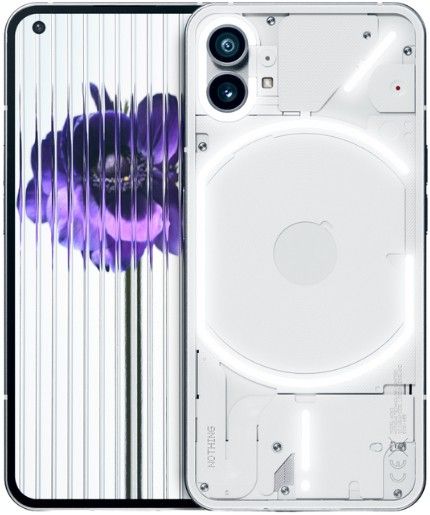
Nothing Phone (1)
Phone 1 is Nothing's first-ever smartphone. It comes with a 6.55-inch 120Hz OLED display with slim bezels, Qualcomm's custom-tuned Snapdragon 778G+ processor, LEDs on the back, Dual 50MP camera sensors, and more. Check out all the deals down below.
-
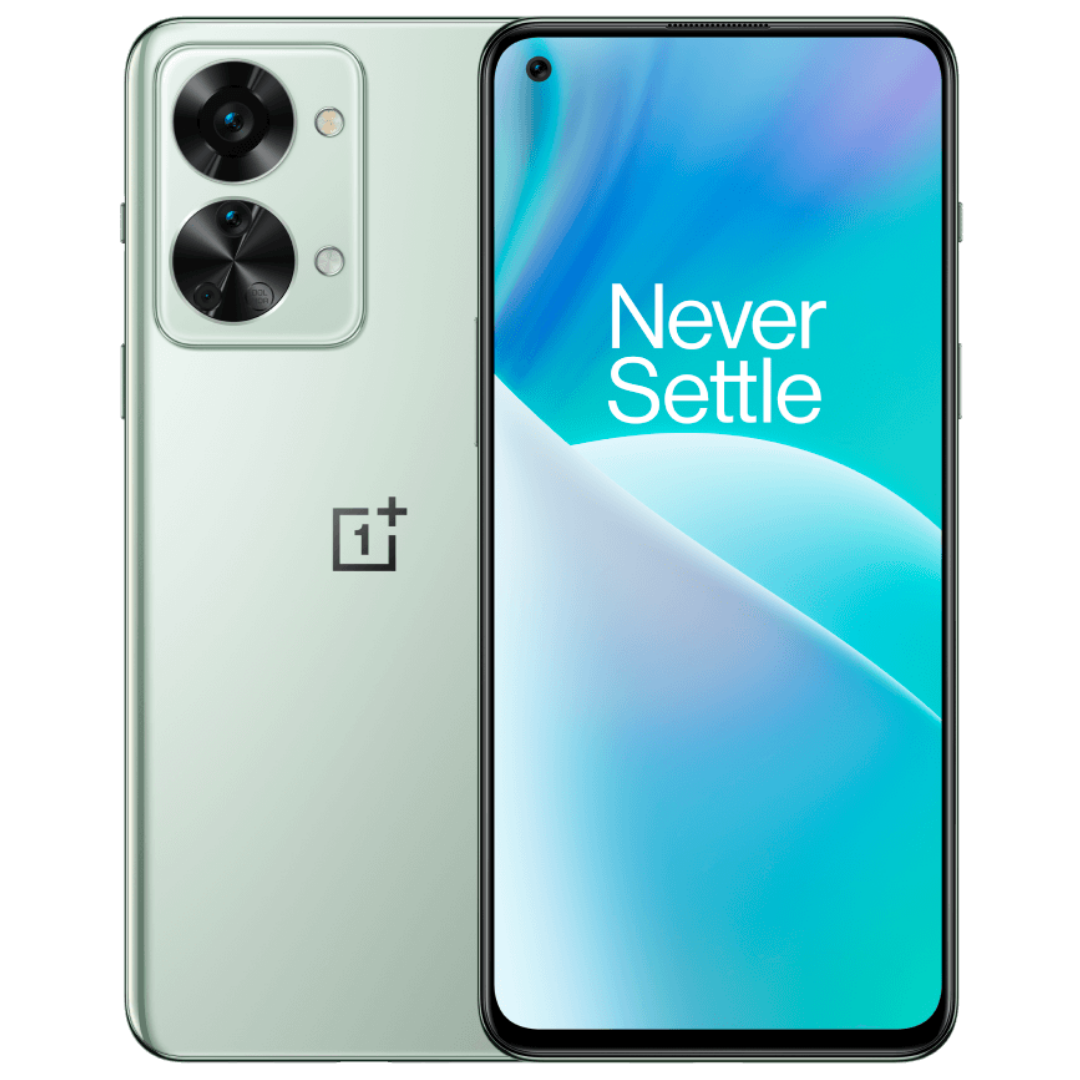
OnePlus Nord 2T 5G
The new OnePlus Nord 2T 5G comes with a 6.43-inch 90Hz AMOLED display, a 50MP primary camera with an 8MP ultrawide and 2MP depth sensor, and a large 4,500 mAh battery. The phone supports 80W fast charging, and a full charge should last you a day or more.
Technical Specifications
|
Smartphone |
Nothing Phone 1 |
OnePlus Nord 2T |
|---|---|---|
|
Operating System |
Android 12 |
Android 12 |
|
Dimensions |
159.2 x 75.8 x 8.3 mm |
159.1 x 73.2 x 8.2 mm |
|
Weight |
193.5g |
190g |
|
Display |
6.55-inch, 2400x1080, OLED, 120Hz |
6.43-inch, 2400x1080, AMOLED, 90Hz |
|
Display Protection |
Corning Gorilla Glass 5 |
Corning Gorilla Glass 5 |
|
Processor |
Qualcomm Snapdragon 778G+ |
MediaTek Dimensity 1300 |
|
CPU Specs |
- 6nm - 1x 2.5GHz Cortex-A78 - 3x 2.4GHz Cortex-A78 - 4x 1.8GHz Cortex-A55 |
- 6nm -1x 3.0GHz Cortex A78 - 3x 2.6GHz Cortex A78 - 4x 2.0GHz Cortex-A55 |
|
GPU |
Adreno 642L |
Mali-G77 MC9 |
|
RAM |
8/12 GB |
8/12 GB |
|
ROM |
128/256 GB |
128/256 GB |
|
Expandable Storage |
No |
No |
|
Rear Cameras |
Primary: 50 MP, f/1.88, wide, OIS, HDR Ultra-wide: 8 MP, f/2.2, 114-degree FoV, HDR |
Primary: 50MP, ƒ/1.8, OIS Ultra-Wide: 8MP, ƒ/2.2, 120-degree FoV Depth: 2MP, ƒ/2.2 |
|
Front Camera |
16 MP, ƒ/2.24, HDR |
32 MP, ƒ/2.4 |
|
Connectivity |
5G, LTE, Wi-Fi 6, Bluetooth 5.2 |
5G, Wi-Fi 802.11 a/b/g/n/ac/ax, Bluetooth 5.2, NFC |
|
Ports |
USB-C |
USB-C |
|
IP Rating |
IP53 |
No |
|
Battery |
4500 mAh |
4500 mAh |
|
Wired Charging |
33W |
80W |
|
Wireless Charging |
- 15W Qi wireless charging - 5W reverse wireless |
No |
|
Colors |
White, Black |
Gray Shadow (Black), Jade Fog (Green) |
|
Price |
£399/€469 |
£369/€399 |

